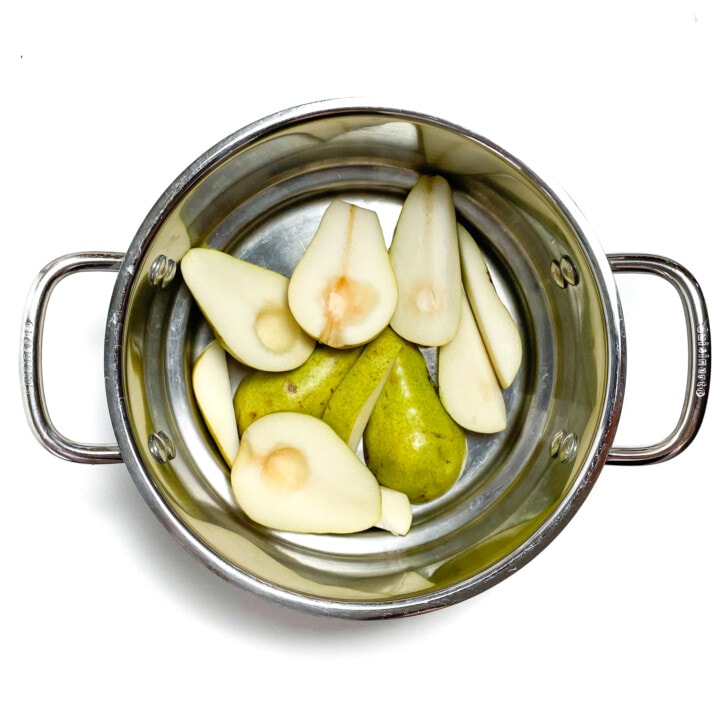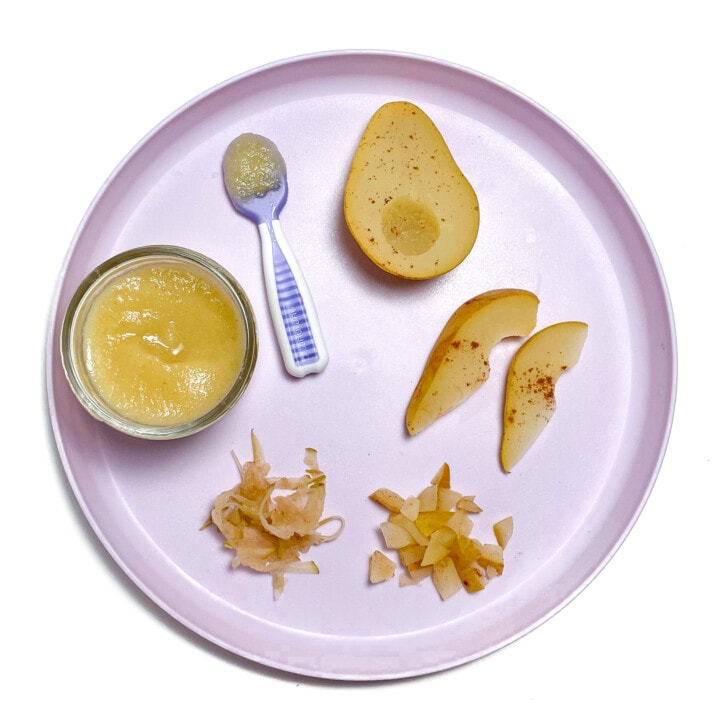Pears with Cinnamon for Baby-Led Weaning
Pears are one of those tried-and-true starter foods that are perfect for baby-led weaning — naturally soft, easy to prep, and full of juicy sweetness. Alongside sweet potatoes and broccoli, pears are a great first fruit to introduce to your baby around 6 months.
Medically reviewed and cowritten by Jamie Johnson, Registered Dietitian Nutritionist (RDN), and Lauren Braaten, Pediatric Occupational Therapist (OT).
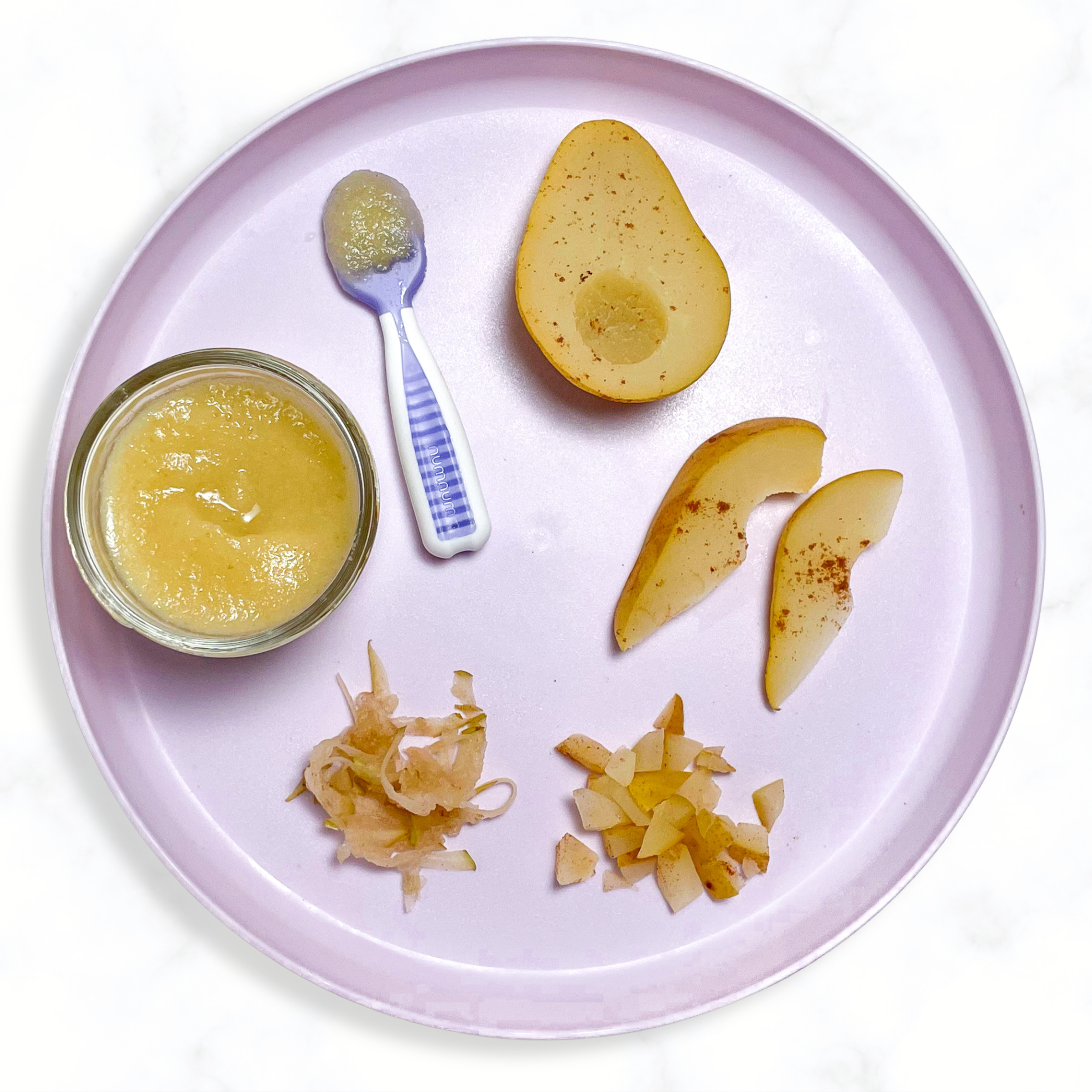
Wondering how to serve pears to your baby?
I’ve got you!
Pears are a great first food for your baby, as they are packed with nutrients and can easily become soft enough for the baby to gnaw on. You can serve them pureed on a self-feeding spoon, cooked and sliced into easy-to-grip wedges, or gently cooked and chopped into soft bite-sized pieces.
Pro tip: A dash of cinnamon takes the flavor to the next level and is a great way to start introducing gentle spices to your baby’s meals. 👶🍐
First time making homemade baby food? Then, I would suggest that you start by reading my very in-depth Complete Guide to Baby-Led Weaning. You can also check out my best-selling cookbook for even more information and recipes!
Ingredients
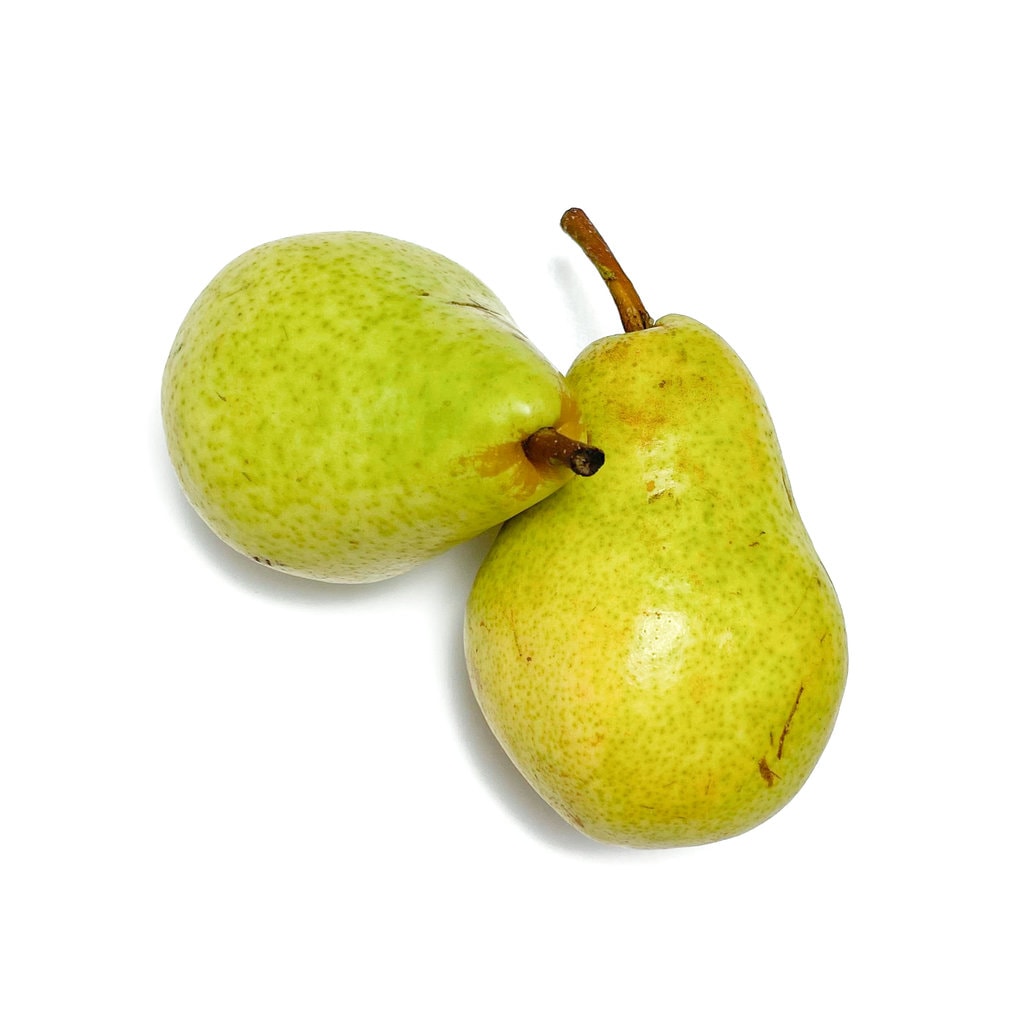
How to Prepare Pears for Baby-Led Weaning
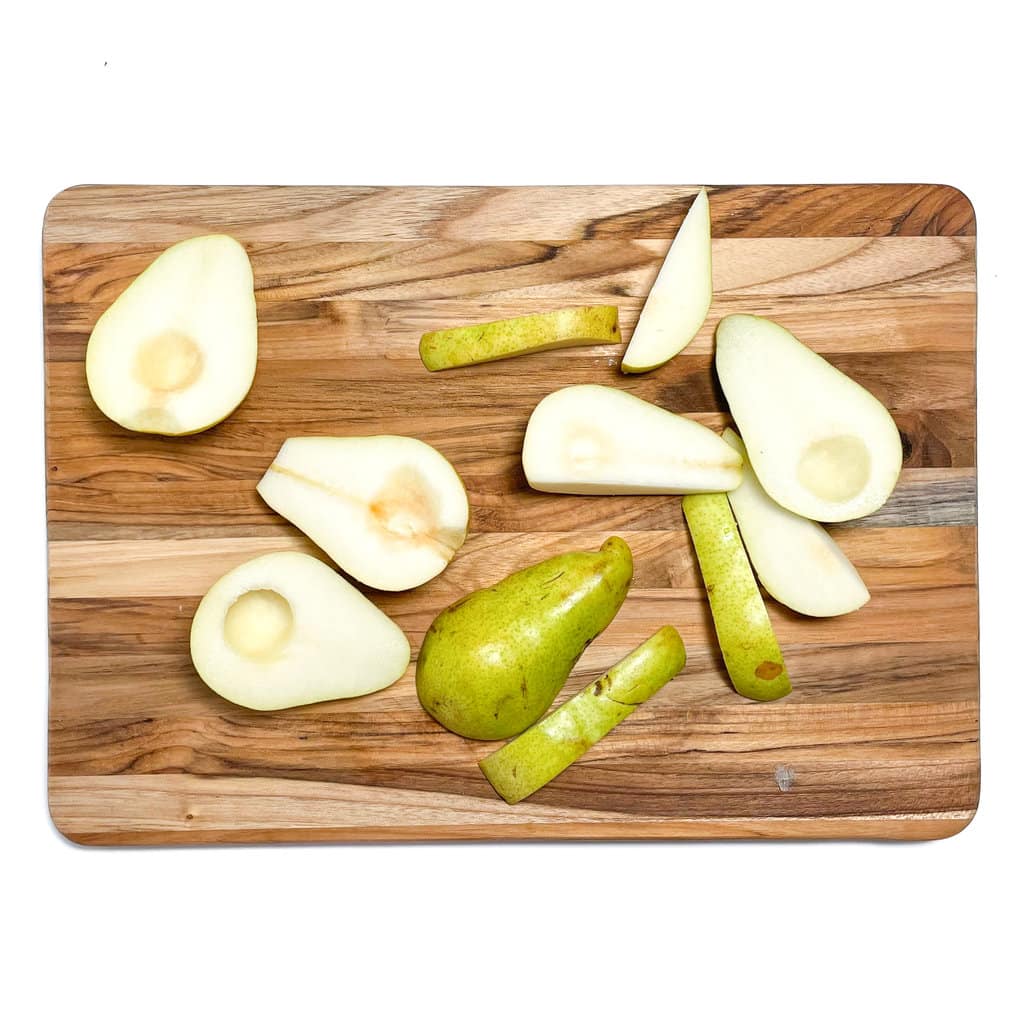
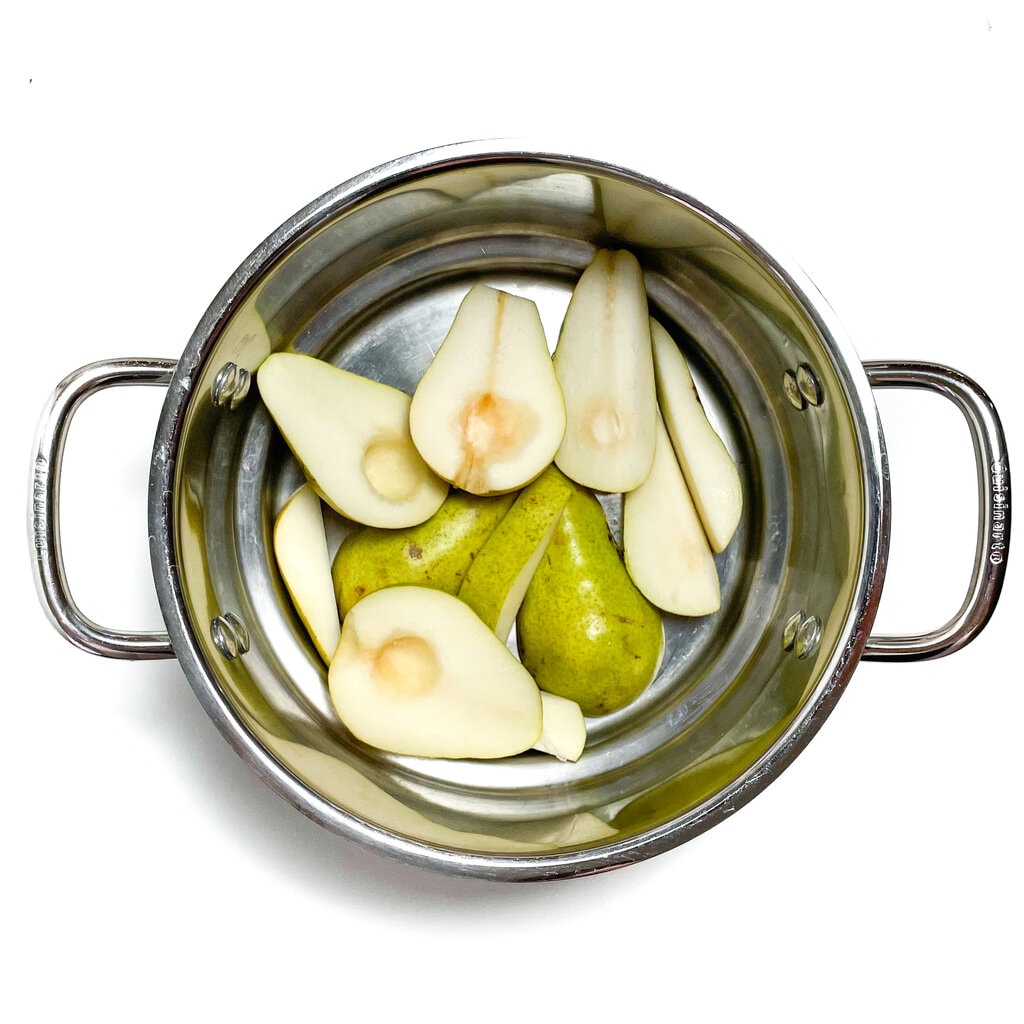
There are several different ways to prepare pears for your baby. Here are some of our favorite ways:
Steamed
In a medium pot, bring 2 inches of water to a boil. Add the pears to a steamer basket, cover, and cook over medium heat for 8 minutes or until fork tender. Let cool slightly.
Simmered
Place pears and 2 tablespoons of water in a medium pot. Turn heat to medium and simmer for 10-15 minutes or until pears are tender.
Sauteed
Melt 1 tablespoon of unsalted butter in a large skillet over medium heat. Add the pears and about 1/2 cup of water. Simmer for 8 minutes, until the water has evaporated and the pears turn golden brown, stirring occasionally.
Pear Puree: You can offer purees and still allow your baby to lead the way with self-feeding by offering the puree on a self-feeding spoon, by placing a few spoonfuls of the puree directly on the tray or in a bowl for your baby to dip their fingers into, or you can even use the puree as a dip for solid foods such a banana or piece of toast.
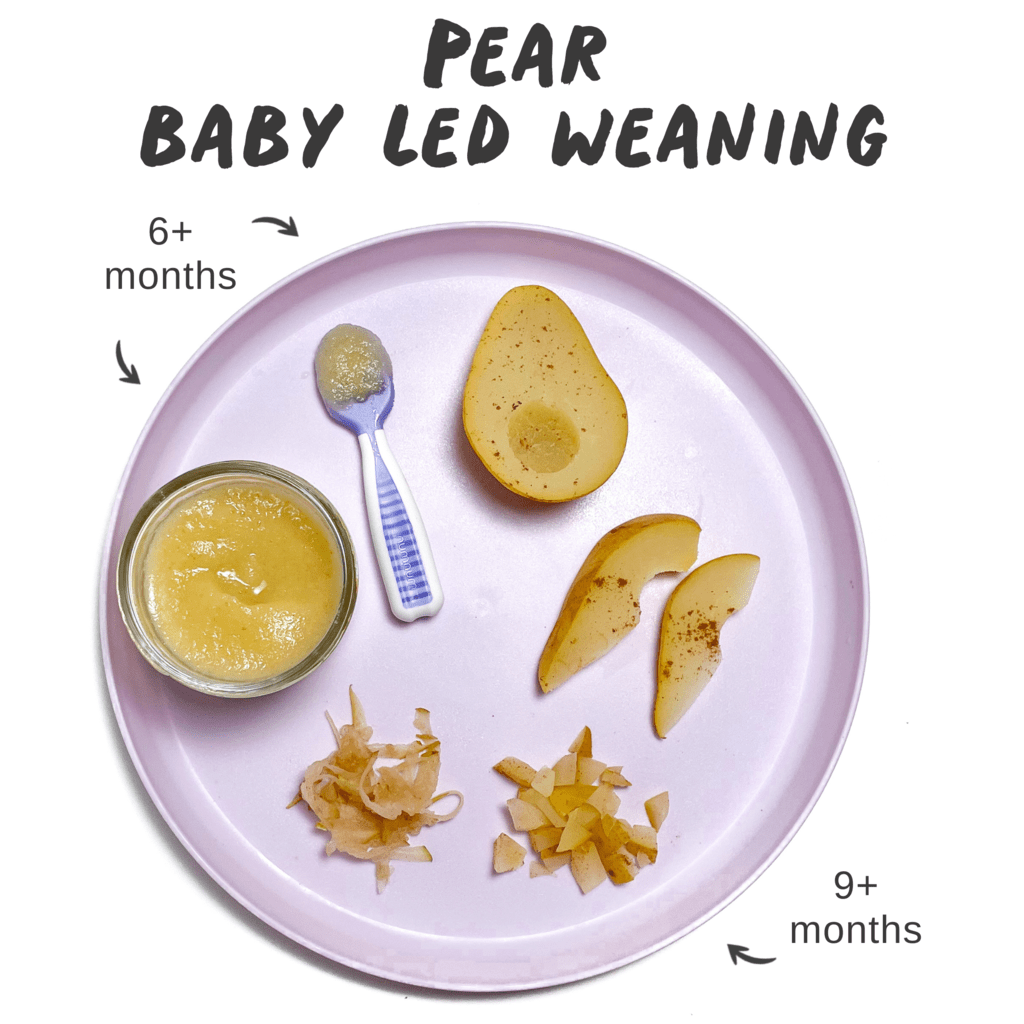
How to Serve Pears for Baby-Led Weaning
Pears can be a choking hazard for your baby, regardless if you are doing baby-led weaning starting at 6 months or during the finger foods stage at 9 months, so it is important to cook and serve them properly.
Cooked in Half, Thick Slice or a Puree (6+ months): These forms will be easier for your baby to pick up at this age. If they are ripe enough, you may not even need to cook them as long as they are soft. Make sure to remove the core before serving halves, so your baby does not eat the seeds. You can offer purees and still allow your baby to lead the way with self-feeding by placing some spoonfuls directly on your baby’s tray or bowl to let them explore on their own, or you can hand them a pre-loaded self-feeding spoon.
Cooked in Chunks or Grated (9+ months): Baby starts to develop the pincer grasp around this age, so serving chopped pieces or grated will help give them practice. Continue to cook them until soft.
Uncooked in Thin Slices, Bite-Sized or Whole Fruit (12+ months): If you haven’t already, offer these with the skin on for more antioxidants and to give your toddler practice with chewing the texture of the peel.
Pear Feeding Tips
- It may seem counterintuitive, but offering younger babies a larger piece of pear, such as cooked halves or thick slices will actually reduce choking risks, as they are less likely to break off a larger piece that’s difficult to manage. Serving larger pieces is also easier for younger babies (6-9 months) to grasp while eating.
- Cooked pears can sometimes be slippery, so try rolling in finely ground baby cereal, hemp seeds, ground flaxseeds, or finely shredded coconut to help give your baby a better grasp.
- Pureed and mashed pears are also great for adding to yogurt, oatmeal, and other pureed fruits and veggies.
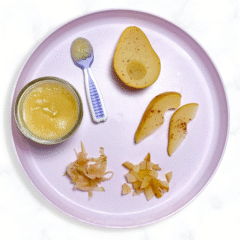
Get the recipe: Pear for Baby-Led Weaning
Ingredients
- 2 pears, cored, and cut in half or long strips
- pinch cinnamon
Instructions
- In a medium saucepan, bring 2" of water to a boil over high heat. Add a steamer basket and add the pears, cover and cook for 10-12 minutes or until tender when pricked with a fork. Remove from heat and let cool.
- Pinch a little cinnamon (if using) on the pears and toss, then cut in an age-appropriate way.
Notes
- Place a few spoonfuls of purees directly on the tray or in a bowl for your baby to dip fingers into. Model how to dip your fingers into the puree and bring them to your mouth, to taste some.
- Offer your baby a pre-loaded self-feeding utensil and hold it out for them to grasp or set on their tray.
- Use a solid food as a dipper. You can also offer a soft stick-shaped piece of food, such as a soft roasted carrot or bread lightly toasted and cut into strips to dip into the puree.
Did you make this recipe?
Tag @babyfoode on Instagram and hashtag it #babyfoode!

